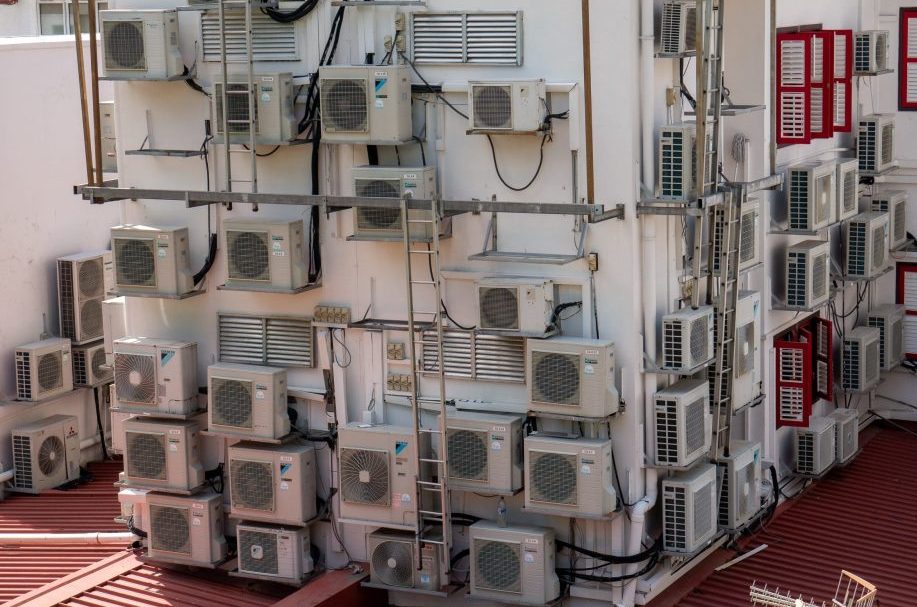An AC tune-up is a must to ensure that your system runs at top performance and that you can pay a lower monthly energy bill. Ac tune-ups also prolong your system’s lifetime and lessen the likelihood of the system breaking down during hot seasons.
You may be wondering: what precisely do mechanics do during an AC tune-up? This article will discuss the importance of maintaining your AC system and what an air conditioning tune-up entails.
Let’s get started!
What are The Advantages of an Air Conditioner Tune-Up?
An AC requires regular servicing to perform better. Just like how you take your car often for an oil change, an air conditioner also needs a frequent tune-up. Here is how you will benefit by tuning up your AC regularly.
Preventing Breakdown and Repairs
A qualified air conditioning system technician performs a comprehensive inspection to provide insight into signs of duress. If the technician notes a loose belt, they will tighten it instantly, hence preventing future breakdowns.
A deserted AC unit reacts with different repair needs, leading to failures. This means high repair costs and possible replacement expenses.
Efficiency
The presence of dirt and debris on your component, lack of lubrication, or a loose belt reduces the performance of your system. Therefore, frequent maintenance upsurges the energy efficiency of your air conditioning system. An AC system depends on good airflow. Thus, a regular air filter change helps your system run better.
What Is Included in the AC Tune-Up Checklist?
Here is the checklist of what you need to do and why.
Inspecting The Indoor Unit Coil for Dirt
Inspecting the interior coil and ensuring it is clean and free of dirt and debris is the most crucial part of your AC tune-up. Sometimes dust and dirt go beyond the filter and settle on the coil. If you fail to replace the filters, often the system becomes less efficient.
Checking The Exterior Refrigerant Lines
Always remind your technician to inspect the refrigerant lines for signs of physical damage. For example, a simple stone ricocheting from a lawnmower is enough to damage your system.
A damaged refrigerant line can lead to leakages.
Check the Exterior Unit Coil
An outdoor AC system unit consists of a set of coils, a compressor that pumps the refrigerant, and a fan on the top to control the system’s temperature. An operator inspects the coils to ensure there is no excess dirt on or around the coils.
If you have dogs, a technician looks for signs of dog urine on the coils. Dog urine can permanently damage the coils and cause leaks in the system that are hard to repair.
Testing the Motor Capacitors
Capacitors are minor but very vital parts for the proper functionality of the entire system. Most air conditioners come with three capacitors, whereby if one fails, the whole system gets compromised. A faulty capacitor is also a reason for repair. Therefore, ensure each capacitor in your system is up to date.
Check the Thermostat
A thermostat is an integral part of your air conditioning system. It is hard to control your system without a working thermostat, even if it is fully functional. Always check to ensure your thermostat doesn’t need new batteries and is wired correctly.
Measure the AC Unit Amperage
A high amperage draw is a sign of potential issues with the compressor, motor, or airflow. An expert can identify the component’s condition by measuring the amps. For example, if the amperage of your system is above the optimal reading, it is a clue that the compressor is overworking or struggling.
Measuring the Temperature Split
A qualified technician can often conclude whether the system is working or not by checking the temperature split. Temperature split is the difference between internal house temperature versus the temperature that blows out of your vents.
The average AC split should be fifteen degrees, and any lower temperature may indicate a problem. The system might be too cold or small to produce enough cold air for the size of your house.
Inspect the Overflow Safety Switch
Fitting your safety switch in an indoor unit can cause your system to shut down if a clogged condensation line or lack of proper water draining is detected. A missing or broken safety switch puts you at risk of a leak, which will damage your ceilings if not identified on time.
Cleaning and Adjusting the Blower Assembly
You can find the assembly in your furnace or air handler. A functioning blower needs to run at the ideal speed to yield correct airflow for your system and ductwork. Therefore, it is good to have it adjusted. In addition, other moving parts, like the motor bearing, should be lubricated.
Clear Out the Evaporator Drain
Clearing your drain line keeps debris from building up and causing water to back up inside your house. For tough clogs, you can use a drain snake or wet vac to break them up.
Check the Disconnect Box
A disconnect box is a safety shutoff box that cuts electricity to the unit. A technician inspects the interiors of the disconnect box to confirm that there is no burnt wire.
An expert ensures that all the connections are tight and no wire is hanging. They make sure the disconnect box is sealed with a clear silicone on the top and the sides as per the mechanical AC code.
Look for Bug and Rodent Issues
Rodents and bugs enjoy building homes around the electrical compartments of air conditioners. Therefore, it is essential to check for damage and ensure no insects or rodents around crucial electrical connections.
Final Words
Most AC system breakdowns occur when the system is working at its maximum speed to keep your house cool and comfortable. Therefore, the best time to schedule your home AC tune-up is during springtime, before summer begins and homeowners need it most. The good news is that you now have access to this AC tune-up checklist to guide you.

